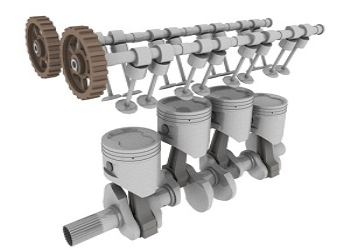Wednesday, October 19, 2016
By Carkhabri Team

Know A To Z Terminologies Of Your Car Before You Buy It: Part 18
Just six more alphabets falling between “U to Z” to go and you will be acquainted with complete knowledge of different terminologies associated with cars that might would have confused you many times while discussing any of the car features with your friends.
Well before we start our blog for today concentrating on terms “U&V” let us revise our last blog Know A To Z Terminologies Of Your Car Before You Buy It: Part 17 and begin our chapter for today.
1. Understeer: Understeer refers to sensitivity of steering situation while driving. The situation normally arises when front wheels of car loss their adhesion or driver moves steering of vehicle in accordance to the speed. When the situation of understeer arises the front wheels do not co-ordinate properly with the angle in which steering wheel is driven. To avoid this situation the driver has to reduce the speed of vehicle to regain the normal speed. The term is mainly used by aspirants of motorsports while writing a blog.

2. Universal joint: It may be described as a joint that facilitates rotation between two shafts which are not arranged symmetrically. Depending upon its architecture the joint can hold subsequent angular variations during its operation. The commonly used universal joint is known as Hooke Joint, which results in speeding and slowing down of output shaft twice for each rotation of input shaft. The speed of fluctuation enhances depending upon the angular differences between the shafts.

3. V-Type Engine: This generally refers to type of engine installed in any vehicle. While going through the engine specification of any vehicle you would have heard about V6, V8, V12 engines. As such the cylinders installed in engine are separated into two groups, with every cylinder angled in such a way that it looks like “V” alphabet at first instance. The angle of cylinder varies depending upon the type of engine configurations, for instance in V6 engine angle of cylinder in 60 degree, in V8 engine it is 90 degree.

4. Vented Disc Brakes: It may be defined as a kind of braking system that offers sufficient space for cooling between friction elements.

5. Valvetrain: Valvetrain may be defined as collection of parts which makes smooth functioning of different valves comprising of camshafts and different components.

6. Valves: A Valve in simple terms may be defined as a component that maintains the flow of fluid. Some overhead-cam cars, especially which have multi-valve models, are developed by the total number of admission and fumes valves in the chamber head. A 24-valve V-6 motor would have four valves for every barrel: two admission and two fumes valves. A 16-valve V-8 motor has just the standard single fumes and single admission valve for each of its eight barrels.

7. Valve float: The rpm of engine at high speed during which the valve lifters fail to establish to contact with cam lobes due to lose valve springs. The proper fixing of valve float controls the rpm of engine at high speed. Rotation of valve float beyond the limit results in breaking of valvetrain.
8. Variable-Assist Steering: The type of power steering system that provides significant assistance to driver depending upon the driving conditions. It offers substantial assistance while driving at low speed for instance turning car or moving the car ahead after being stopped at traffic stop light. Similar while driving at highway it offers subsequent stability to vehicle when the vehicle is driven at high speed.



Comments (0)